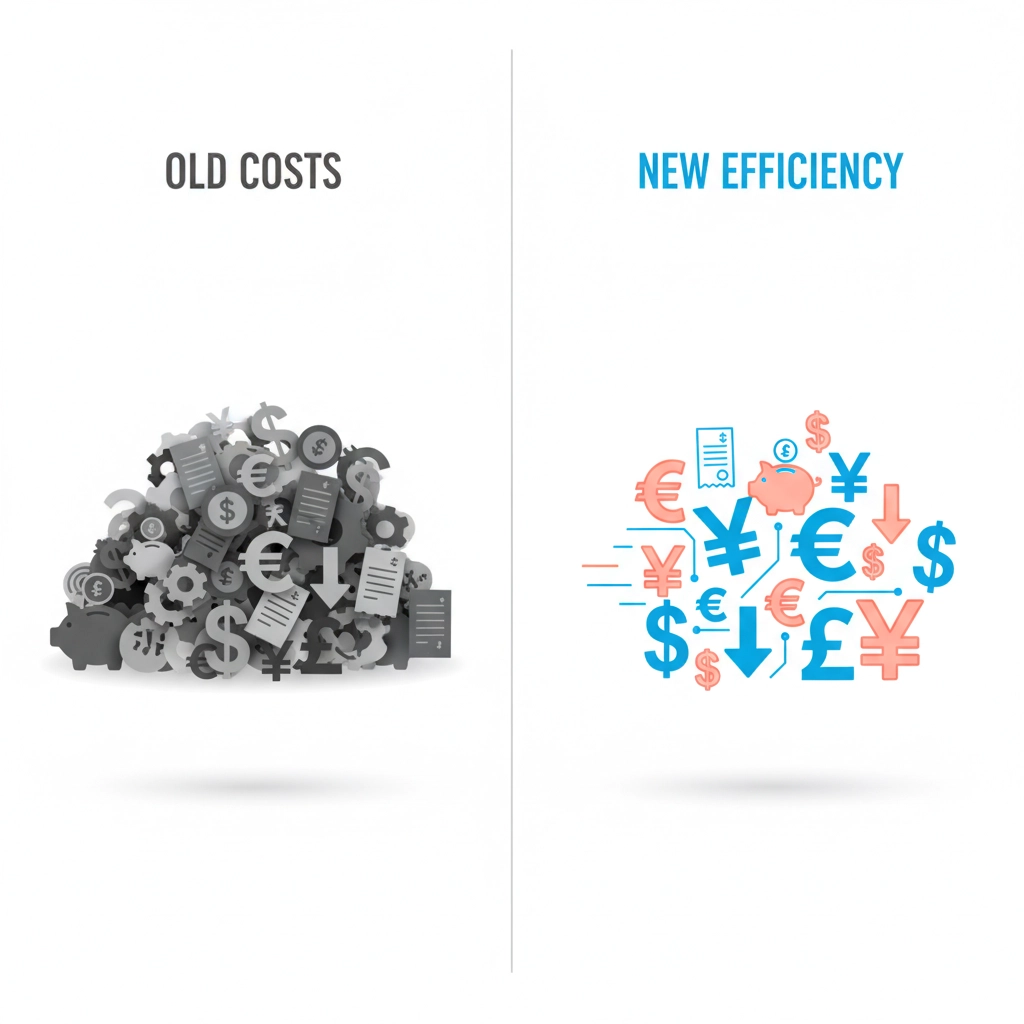Something extraordinary is happening in the UK's leadership landscape. Just two years ago, roughly 2,000 professionals were working as fractional executives. Today? That number has exploded to over 110,000: and it's showing no signs of slowing down.
This isn't just a trend; it's a fundamental shift in how smart SMEs are thinking about leadership. And the numbers tell a compelling story: businesses are saving £80,000+ per executive hire whilst getting better results than traditional full-time appointments.
What's Driving This Leadership Revolution?
The fractional leadership boom didn't happen overnight. It's the result of several converging factors that have made traditional executive hiring feel outdated and expensive for growing businesses.
Economic Pressure Meets Smart Thinking
SME owners are tired of gambling with six-figure salaries for executives who might not deliver. The average C-suite salary in the UK now exceeds £150,000, and when you add in benefits, pension contributions, and the hidden costs of recruitment, you're looking at £200,000+ for a single hire.
Fractional executives typically cost between £3,000-£8,000 per month for equivalent expertise. The maths is simple: you're saving 60-70% on leadership costs whilst getting access to executives who've been there, done that, and bought the company.

Flexibility Trumps Full-Time Commitment
Today's business landscape changes rapidly. The marketing strategy that worked six months ago might be obsolete today. The financial challenges you're facing now might be completely different next quarter.
Full-time executives are expensive to pivot. Fractional leaders are designed to adapt. Need someone to guide your digital transformation for four months? Sorted. Require a CFO to help you through a funding round? They're available. Want to test a new market without committing to a permanent sales director? You've got options.
The Real Cost Savings: Where Your £80k+ Goes
Let's break down exactly where these savings come from, because the numbers are more impressive than most business owners realise.
Direct Salary Savings
- Full-time CMO: £120,000 base salary
- Fractional CMO: £48,000 (2 days per week)
- Immediate saving: £72,000
Hidden Cost Elimination
- No employer NICs (£13,500+)
- No pension contributions (£3,600+)
- No benefits package (£8,000+)
- No office space and equipment (£4,000+)
- Additional savings: £29,100+
Recruitment and Onboarding Costs
- Executive recruitment fees (£24,000+)
- Onboarding time and resources (£6,000+)
- Process savings: £30,000+
Total potential savings per hire: £131,100+
And that's before we factor in the risk mitigation. If a full-time executive doesn't work out, you're looking at redundancy costs, another recruitment process, and months of disrupted operations. With fractional leadership, you can adjust or change direction with minimal financial impact.
Beyond Cost: The Strategic Advantages That Matter
Whilst the cost savings grab attention, smart SME owners are discovering that fractional leadership offers advantages that money can't buy.

Instant Expertise Access
Fractional executives bring battle-tested experience from multiple companies and industries. Your fractional CFO has likely navigated three funding rounds this year. Your fractional CTO has probably led digital transformations across various sectors. This cross-pollination of ideas and strategies gives your business an unfair advantage.
Speed of Implementation
Traditional executive recruitment takes 3-6 months. Fractional executives can start within weeks, sometimes days. When opportunities or crises emerge, this speed difference can determine whether you capture market advantage or miss the boat entirely.
Risk-Free Testing
Not sure if you need a full-time CTO? Engage a fractional one for three months and find out. Considering international expansion? Bring in a fractional business development director to explore the opportunity before making permanent commitments.
Who's Leading the Charge?
The fractional leadership boom spans across industries, but certain types of businesses are driving the majority of adoption:
Scale-Up Champions
Companies in their growth phase (£2-20M revenue) are embracing fractional leadership enthusiastically. They've outgrown founder-led decision making but aren't ready for full C-suite overheads. Fractional executives provide the strategic thinking needed to scale without the fixed costs that kill cash flow.
Tech-Forward SMEs
Technology companies understand the benefits of scalable, flexible resources. They're applying the same thinking to leadership that they apply to cloud infrastructure: pay for what you use, scale up or down as needed, and access enterprise-level capabilities without enterprise-level commitments.
Established Businesses Facing Change
Traditional businesses navigating digital transformation, market shifts, or generational transitions are discovering that fractional leaders bring fresh perspectives without threatening existing team dynamics.

The Numbers Don't Lie: Market Growth Statistics
The research backs up what business owners are experiencing firsthand:
- Temporary business management roles grew 18% from 2021 to 2022
- Overall growth in fractional executive positions: 57% since 2020
- Average cost savings: 40-60% compared to full-time equivalents
- Time to start: 2-3 weeks vs 3-6 months for traditional hires
These aren't just statistics: they represent thousands of SMEs making smarter leadership decisions and seeing real results.
How to Get Started: Making Your First Fractional Hire
If you're considering fractional leadership, here's the practical roadmap that successful SMEs follow:
Step 1: Identify Your Biggest Leadership Gap
Where is lack of senior expertise holding you back? Is it marketing strategy, financial planning, operations scaling, or technology decisions? Start with your most pressing need.
Step 2: Define Success Metrics
What would success look like in 90 days? Six months? Be specific about outcomes, not activities. "Increase qualified leads by 40%" is better than "improve marketing."
Step 3: Choose the Right Engagement Model
Some fractional executives work set days per week. Others prefer project-based arrangements. Match the model to your needs and cash flow preferences.
Step 4: Plan for Integration
Fractional executives succeed when they're treated as part of the leadership team, not external consultants. Ensure they have access to the information, people, and resources needed to deliver results.
The Future of SME Leadership
This isn't a temporary trend: it's the new normal. As the fractional leadership market matures, we're seeing specialisation increase and quality improve. The best fractional executives are choosing this model deliberately, not as a fallback between permanent roles.
For SME owners, this creates unprecedented opportunities to access world-class leadership expertise at SME-friendly prices. The question isn't whether fractional leadership will continue growing: it's whether your business will be part of the movement or watching from the sidelines.
The 110,000 professionals now working as fractional executives represent more than just a number. They represent a fundamental shift towards smarter, more flexible business leadership. And for SMEs willing to embrace this model, the advantages: financial and strategic: are too significant to ignore.
Ready to explore how fractional leadership could transform your business? The revolution is already underway, and there's never been a better time to join it.


